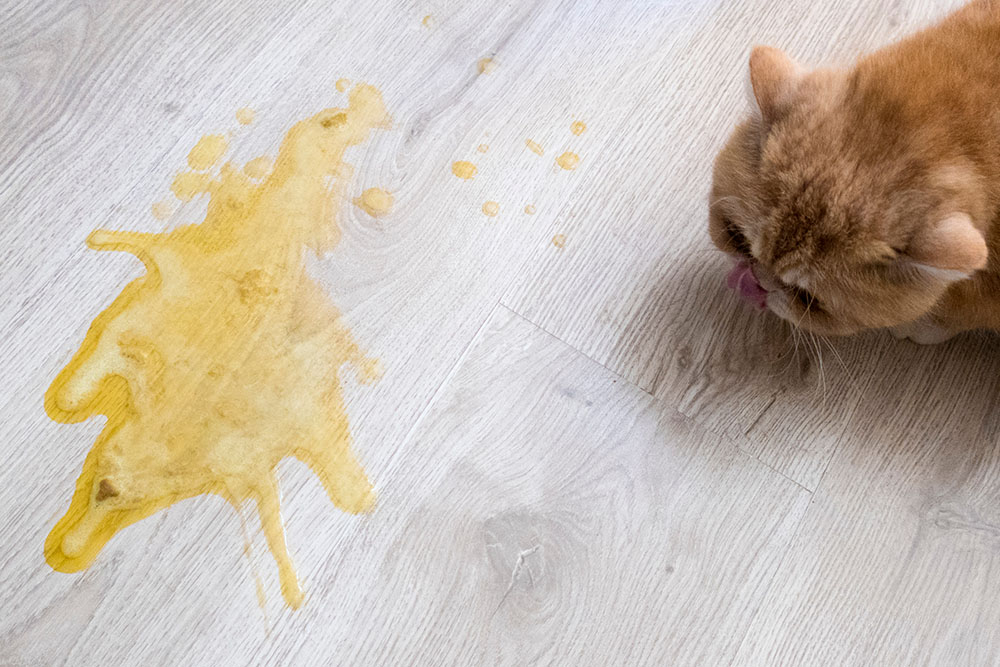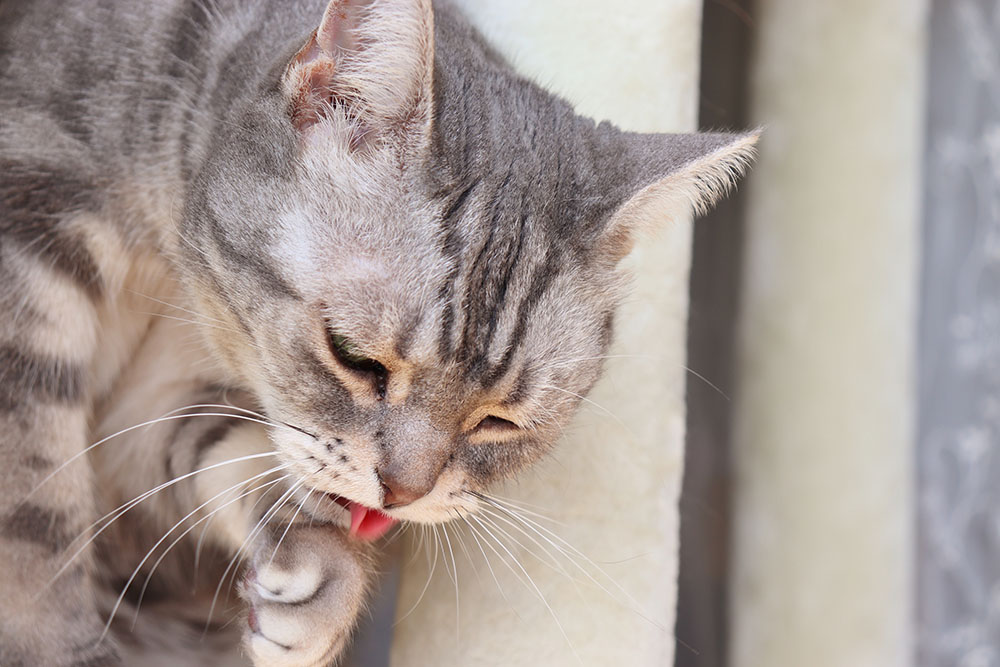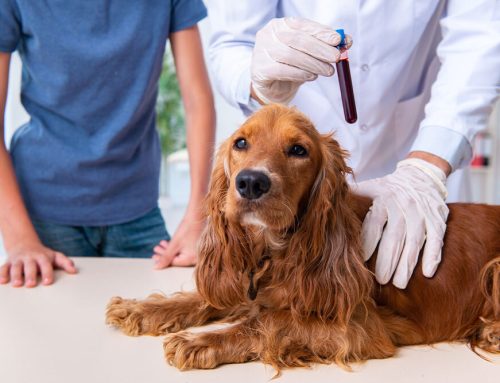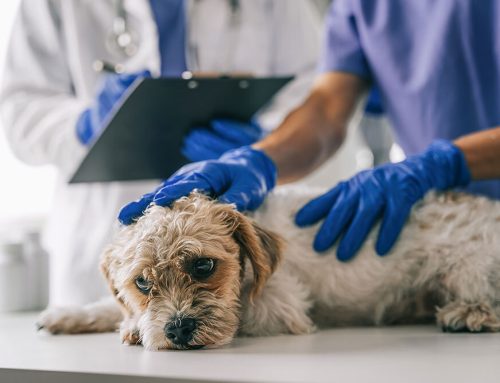The Truth About Cat Vomiting: Insights from a Vet
Palisades Veterinary Hospital | Fountain Hills, Arizona
You hear it in the middle of the night: that unmistakable sound from somewhere under the bed. Few noises grab your attention faster than that retch. Many cat owners accept an occasional mess as “normal,” but frequent or forceful vomiting is always a sign that something is off. At Palisades Veterinary Hospital in Fountain Hills, Arizona, we help families distinguish minor upsets from red-flag emergencies so cats get care before small problems escalate.
Understanding Vomiting in Cats
Vomiting is an active process involving abdominal effort to expel stomach or intestinal contents, while regurgitation is passive and usually happens right after eating. Recognizing the difference helps guide urgency and treatment.
Vomiting may be acute (sudden) or chronic (recurrent). Even a single episode suggests irritation, but repeated events, appetite changes, or withdrawn behavior mean your cat should be examined. The appearance of the material also matters, since different types of vomit can point to very different causes.
Why Do Cats Vomit? Common Causes to Know
Digestive Triggers
- Cats swallow fur during grooming; if the hair doesn’t pass, it irritates the stomach. Long-haired breeds, senior cats with reduced gut motility, and stressed over-groomers are most at risk. Regular brushing and hairball-control diets reduce frequency, but persistent hairballs can inflame the gut or create an obstruction that needs surgery.
- Diet changes or fatty scraps. Sudden food switches or rich table treats disrupt stomach acid and gut bacteria; gradual transitions and consistent pet food safety practices reduce risk. Food allergies or intolerances can also spark vomiting, so keep a record of brands, flavors, and treats to spot patterns.
- Foreign objects. String, toys, or hair ties may lodge in the intestines, creating a gastrointestinal foreign body that requires emergency surgery. Repeated unproductive gagging, sudden lethargy, or a painful belly are classic warning signs.
- Gastric motility problems. Slow stomach emptying lets food linger, causing irritation. Disorders like megacolon, autonomic neuropathy, or secondary effects of chronic disease can all slow transit. Specialized diets, hydration support, and pro-motility medication often help.
Underlying Health Conditions
- Chronic kidney disease (CKD). Toxin buildup from reduced kidney function causes nausea and repeated vomiting; signs of chronic kidney disease in cats typically progress gradually, with increased thirst and weight loss appearing alongside stomach upset.
- An overactive thyroid speeds metabolism, raises stomach acid, and often causes weight loss with vomiting. Restlessness and a ravenous appetite also appear. Feline hyperthyroidism is treatable with medication, diet, or radioactive iodine therapy.
- Inflammation of the pancreas causes abdominal pain, lethargy, and vomiting. Early recognition of pancreatitis in pets prevents complications; therapy can include pain control, IV fluids, and diet modification.
- Inflammatory bowel disease (IBD). Chronic immune-mediated inflammation of the intestines leads to vomiting, diarrhea, and weight loss. Hypoallergenic diets and immunosuppressive medication often bring relief.
- Hepatic lipidosis. Cats that stop eating for forty-eight hours may develop life-threatening fat accumulation in the liver. Preventing hepatic lipidosis requires early feeding support, especially in overweight cats. Force-feeding or appetite stimulants under veterinary guidance can be lifesaving.
Additional Factors
- Parasites or infection. Worms, viruses, and bacteria inflame the digestive tract; routine deworming and vaccination help prevent flare-ups.
- Lilies, human medications, cleaners, and essential oils are common hazards; the poison control list of household risks highlights what to keep out of reach.
- Stress and anxiety. Travel, renovations, new pets, or even changes in your work schedule elevate stress hormones that disrupt digestion. Environmental enrichment, pheromone diffusers, and slow introductions ease anxiety and reduce stress-related vomiting.
When to See the Vet
Call us promptly if your cat:
- Vomits more than once in twenty-four hours or has vomiting with appetite loss or diarrhea
- Vomits more than twice in a month
- Produces vomit or stool with blood
- Acts lethargic, hides, or refuses food
- Loses weight or drinks noticeably more or less
Behavioral changes often appear before visible illness. Acting early improves comfort and outcomes.
How Palisades Can Help
At Palisades, our goal is not just to stop vomiting, but to uncover its root cause and support long-term health. We begin with a detailed history, asking about diet, environment, toxin exposure, and stressors- followed by a nose-to-tail examination. From there, we may recommend:
- Laboratory testing. Our in-house laboratory provides same-day blood work, urinalysis, and fecal exams, giving us rapid insight into kidney, liver, thyroid, and digestive health.
- Digital X-rays or abdominal ultrasound through our advanced diagnostics reveal obstructions, tumors, or inflammation not visible externally.
- Endoscopy and biopsy. For chronic vomiting, we can collect tissue samples or remove objects using minimally invasive tools, avoiding full surgery when possible.
- Supportive care. Vomiting often leaves cats dehydrated and nauseous. We offer fluid therapy, anti-nausea injections, and appetite stimulants to provide immediate relief while diagnostics continue.
- Specialized treatment plans. Whether the problem is IBD, pancreatitis, or kidney disease, our internal medicine team creates tailored plans that may include prescription diets, medications, or long-term monitoring.
- Convenient care. Our on-site pharmacy ensures your cat goes home with the right medication the same day, without extra stops.
This multi-step approach means your cat gets both rapid symptom relief and a thoughtful long-term plan.
Preventing Future Episodes
- Offer a consistent, high-quality diet and transition foods slowly.
- Brush long-haired cats to limit hairballs.
- Store strings, ties, and toys safely.
- Remove toxic plants using the ASPCA plant guide.
- Provide puzzle feeders and vertical spaces to reduce stress.
- Schedule preventative care visits for exams and bloodwork.
- Track subtle aging signs with the AAHA senior pet checklist.
FAQs About Vomiting in Cats
Is occasional vomiting normal? One hairball may not mean disease, but vomiting is never truly normal. Call if it happens more than once a month.
Can stress cause vomiting? Yes. Cats often internalize stress and show it through digestive upset.
Is it okay to wait and watch? Monitor mild vomiting for twenty-four hours. If it continues or your cat seems unwell, schedule a visit.
How do I know it is an emergency? Persistent vomiting, lethargy, blood in vomit, or signs of dehydration require same-day care.
Do Not Wait and Worry- We Are Ready To Help
Vomiting is always a symptom, and cats are experts at hiding illness. The team at Palisades Veterinary Hospital combines advanced diagnostics with compassionate care to provide answers quickly.
Schedule an appointment through our contact page or call our emergency services if urgent care is needed. Together we’ll help your cat stay healthy, comfortable, and at ease.









Leave A Comment